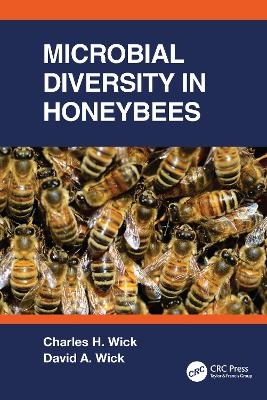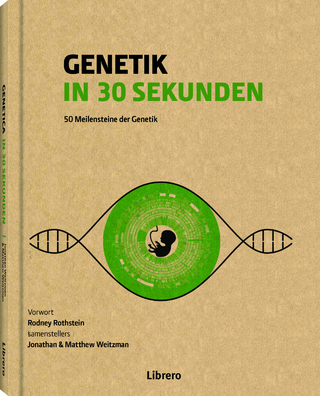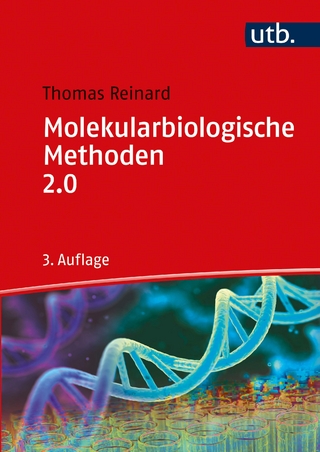
Microbial Diversity in Honeybees
CRC Press (Verlag)
978-0-367-53944-3 (ISBN)
Honeybees are an important link in our food chain because they are major pollinators of food crops. In recent years, honeybee populations have declined precipitously perhaps due to changes in their microbiome. This book describes and identifies the bee microbiome using a proteomics technology. Chapters include the detection and identification of microbes found in honeybees collected around the United States. This book contains new data and illustrates the rich diversity of microbes as collected by honeybees. It is a must read for everyone concerned about the honeybee and working in the industry.
Dr. Charles H. Wick is a retired senior scientist from the US Army Edgewood Chemical Biological Center (ECBC) where he served both as a manager and research physical scientist and has made significant contributions to forensic science. Although his 40–year professional career has spanned both the public sector and the military, his better-known work in the area of forensic science has occurred in concert with the Department of Defense (DOD). He is a founding member of BIOid, Inc. Dr. Wick earned four degrees from the University of Washington and worked in the private sector (civilian occupations) for twelve years, leading to a patent, numerous publications, and international recognition among his colleagues. In 1983, Dr. Wick joined the Vulnerability/Lethality Division of the United States Army Ballistic Research Laboratory, where he quickly achieved recognition as a manager and principal investigator. It was at this point that he made one of his first major contributions to forensic science and to the field of antiterrorism; his team was the first to utilize current technology to model sub-lethal chemical, biological, and nuclear agents. This achievement was beneficial to all areas of the Department of Defense, as well as to the North Atlantic Treaty Organization (NATO), and gained Wick international acclaim as an authority on individual performance for operations conducted on a nuclear, biological, and chemical (NBC) battlefield. During his career in the United States Army, Wick rose to the rank of Lieutenant Colonel in the Chemical Corps. He served as a Unit Commander for several rotations, a staff officer for six years (he was a Division Chemical Staff Officer for two rotations), Deputy Program Director Biological Defense Systems, and retired from the position of Commander of the 485th Chemical Battalion in April of 1999. Dr. Wick continued to work for the DOD as a civilian at the ECBC. Two notable achievements, and one which earned him the Department of the Army Research and Development Award for Technical Excellence and a Federal Laboratory Consortium Technology Transfer Award in 2002, include his invention of the Integrated Virus Detection System (IVDS), a fast-acting, highly portable, user-friendly, extremely accurate and efficient system for detecting the presence of viruses for the purpose of detection, screening, and characterization. The IVDS can detect the full spectrum of known, unknown, and mutated viruses. This system is compact, portable, and does not rely upon elaborate chemistry. The second, and equally award winning, was his creation and leadership in the development of software designed for detecting and identifying microbes using Mass Spectrometry Proteomics. Each of these projects represents determined ten year efforts and is novel in their approaches to the detection and classification of microbes from complex matrices. Both topics are the subjects of two of his books published by CRC Press (Identifying Microbes by Mass Spectrometry Proteomics, 2013, and Integrated Virus Detection, 2014). Throughout his career, Dr. Wick has made lasting and important contributions to forensic science and to the field of antiterrorism. Dr. Wick holds several U.S. Patents in the area of microbe detection and classification. He has written more than forty-five civilian and military publications and has received myriad awards and citations, including the Department of the Army Meritorious Civilian Service Medal, the Department of the Army Superior Civilian Service Award, two United States Army Achievement Medals for Civilian Service, the Commander's Award for Civilian Service, the Technical Cooperation Achievement Award and twenty-five other decorations and awards for military and community service. David Wick brings 21 years of demonstrated ability to implement new or novel uses of technology. Ongoing and currently, Mr. Wick is currently providing services to the nations beekeepers as a virus and disease monitoring service. Mr. Wick has introduced and briefed this novel use of IVDS technology to Lawrence Livermore National Lab, Livermore, CA; Plum Island Animal Research Station, Orient Point, NY, (detection of hoof-in-mouth recovery from barnyard ground samples); CDC Bio Terrorism Lab, Atlanta, GA; NIAID, Bethesda, MD (work on hepatitis virus); Washington Hospital Center – Washington DC to screen patients in the ER for an early warning to a viral outbreak; PACCOM, San Diego, CA (potential use on war ships as an early warning of a viral outbreak); Titan Corp., San Diego, CA; Homeland Security Science and Technology, Washington D.C (application as an air-sampling in subway stations as an early detection for a bio-attack).; NYCDOPH, NY,NY (to monitor public viral loads); Montana Fish Wildlife and Parks (Bighorn Sheep); Idaho Fish and Game (Mallard Duck die-off); University of Montana (surface recovery in several locations); Charles River Laboratory, MA (virus verification and detection in research animals); EPA – Cincinnati (waste water testing – in 2019 BVS won 2nd place in a worldwide competition to detect viruses in waste water using the IVDS technology – awarded a monetary prize). Publication: SINGULARLY NARROW VIRAL SIZE AND MOBILITY STANDARDS FROM THE 38.3 nm CHRONIC BEE PARALYSIS VIRUS AND ITS 17.5 nm SATELLITE; Fernandez de la Mora, Juan; Wick, David; Perez-Lorenzo, Luis: Analytical Chemistry; Submitted June, 2020, Accepted, September 2020.
Preface. Acknowledgments. Author/Editor Biographies. Abstract. List of Abbreviations. Microbe Diversity in Honeybees. Mass Spectrometry Proteomics. Apis. Bee Gut. Coronavirus. Bacteria. Fungi. Nosema. Viruses. Water Microbes (EPA Standards). Discussion. Bibliography. Appendix A – National Average for Bacteria. Appendix B – California Region Average for Bacteria. Appendix C – Florida Region Average for Bacteria. Appendix D – Idaho Region Average for Bacteria. Appendix E – Iowa Region Average for Bacteria. Appendix F – Montana Regional Average for Bacteria. Appendix G – National Average for Fungi. Appendix H – California Region Average for Fungi. Appendix I – Florida Region Average for Fungi. Appendix J – Idaho Region Average for Fungi. Appendix K – Iowa Region Average for Fungi. Appendix L – Montana Region Average for Fungi. Appendix M – National Average for Viruses. Appendix N – California Region Average for Viruses. Appendix O – Florida Region Average for Viruses. Appendix P – Idaho Region Average for Viruses. Appendix Q – Iowa Region Average for Viruses. Appendix R – Montana Region Average for Viruses. Index.
| Erscheinungsdatum | 17.07.2023 |
|---|---|
| Zusatzinfo | 32 Line drawings, color; 104 Line drawings, black and white; 32 Illustrations, color; 104 Illustrations, black and white |
| Verlagsort | London |
| Sprache | englisch |
| Maße | 152 x 229 mm |
| Gewicht | 280 g |
| Themenwelt | Naturwissenschaften ► Biologie ► Genetik / Molekularbiologie |
| Naturwissenschaften ► Biologie ► Zoologie | |
| Weitere Fachgebiete ► Land- / Forstwirtschaft / Fischerei | |
| ISBN-10 | 0-367-53944-6 / 0367539446 |
| ISBN-13 | 978-0-367-53944-3 / 9780367539443 |
| Zustand | Neuware |
| Informationen gemäß Produktsicherheitsverordnung (GPSR) | |
| Haben Sie eine Frage zum Produkt? |
aus dem Bereich


